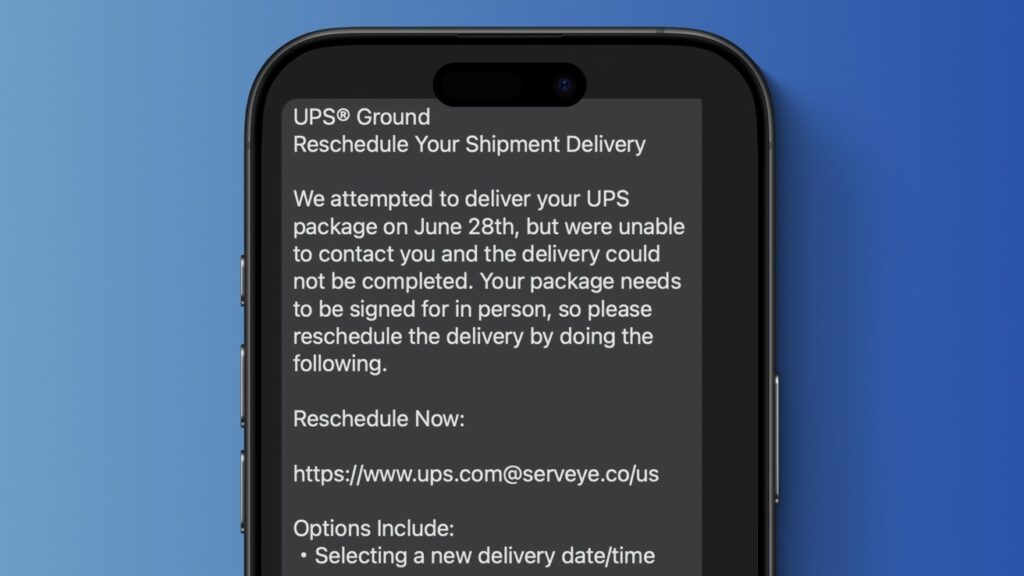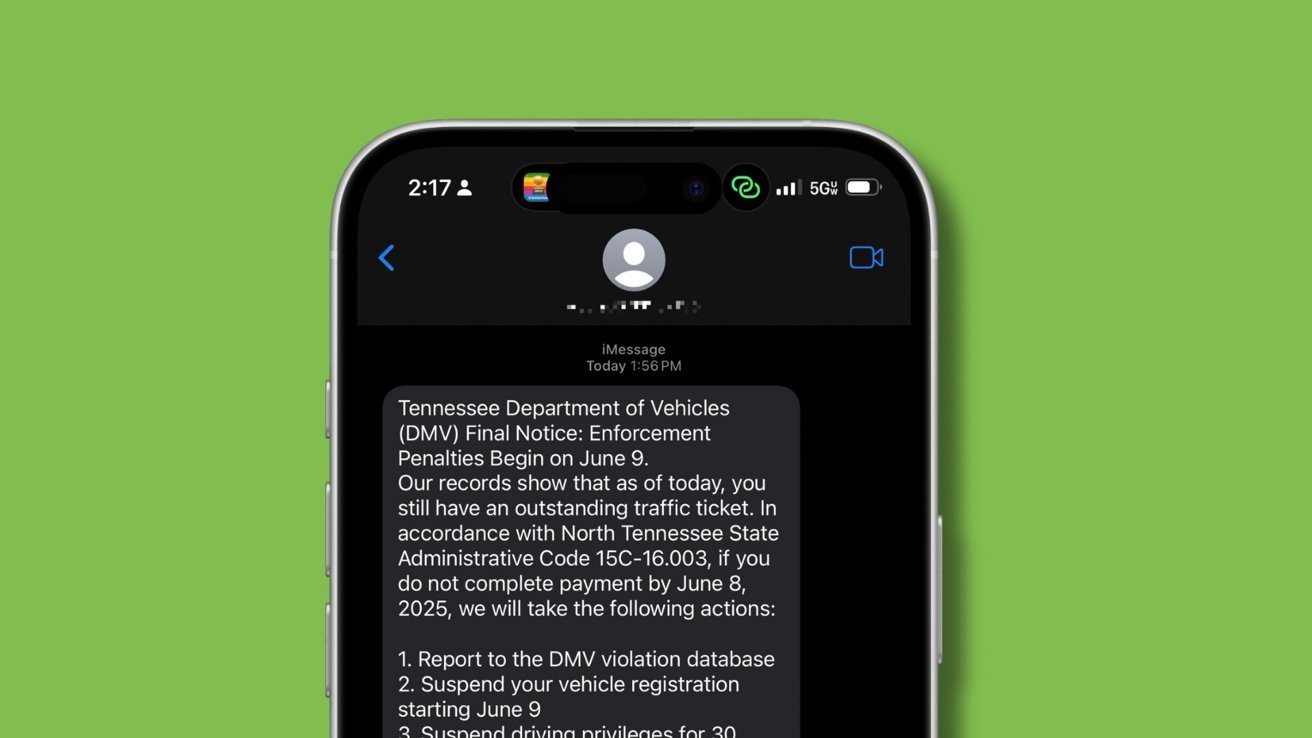
Cybercriminals and fraudsters are using fake texts, this time from UPS, to gain access to iPhone users’ personal information. Here’s how to stay safe and keep your data from falling into the wrong hands.
Text messages claiming to be from the package delivery service UPS have been popping up as part of a new phishing scam. Much like the fake DMV texts our staffers receiver earlier in June 2025, which scared people with claims of unpaid traffic tickets and threats of legal action, the fraudulent UPS texts inform users of a supposed failed package delivery.
The message even instructions about how to reschedule delivery, and claims that failing to do so will cause the unspecified package to be returned to its sender. The scammers behind the message put in a considerable amount of effort, and it may appear legitimate at first glance, given the lack of any obvious grammatical errors.
Still, there’s no package number within the text, meaning that the scam is targeting anyone and everyone expecting a UPS delivery in the near future.
The text includes a link to a fake UPS website and urges victims to reply with the letter “Y” to activate the link. By default, links aren’t tappable if the text is from an unknown sender.
If you reply with that “Y,” the message it automatically becomes from a “known” sender. This then makes the link tappable.
The text message encourages users to do so and to click the link, even suggesting the user copy and paste the fraudulent link into Safari. It then goes on to caution the user, saying that they should ensure their contact details are up to date, indicating that it’s a phishing scam. In other words, the fraudsters are after iPhone users’ personal information.
Why the scam is spreading
These types of texts are cheap and easy to send at scale. Criminal groups, believed to include networks operating from China, use low-cost mass texting platforms and bulk phone number purchases to blast millions of devices.
The return on investment can be significant if even a small percentage of recipients respond. Apple has introduced safeguards like removing clickable links in Messages from unknown senders. But many scams now instruct users to “reply Y” and reopen the message which allows users to click the link.
Even savvy users can fall for the trick. Sometimes, the scam may reach someone who’s genuinely expecting a package from UPS, which adds a false sense of plausibility.
How to recognize and respond to scam texts
If you’re expecting a package and you receive a text from someone posing as UPS, the most important thing is to avoid interacting with it. Don’t click any links or reply to the text, even with something as simple as “Y.”

Some scammers impersonate government agencies, with threats of legal action.
That kind of response can confirm your number is active and open the door to further targeting. Instead, block the sender and report the message. Apple iPhone users can tap “Report Junk” directly in the Messages app to help flag the scam.
If you’re uncertain whether the notice is legitimate, go directly to official sources like UPS.com rather than trusting any link in a message.
The FBI also encourages anyone who receives a scam text to file a complaint with the Internet Crime Complaint Center at ic3.gov. After that, you can safely delete the message.
Scam texts often share certain characteristics. Many impersonate existing or widely known package delivery services, and they typically use domain names that appear official but include suspicious extras.
These suspicious components can be unfamiliar suffixes like “.life” or hyphenated versions of real company URLs. The fake UPS message contains the URL “serveye.co.us,” a website which is in no way affiliated with UPS. Needless to say, an official text message would include a link to the genuine UPS website — UPS.com, rather than anything else.
Sometimes they can also lack relevant information, as the fake UPS texts, for instance, contain no package numbers or other tracking information about the supposed failed delivery.
Other red flags include messages from foreign numbers, vague legal threats, or demands for immediate payment to prevent the supposed package from being sent back. Some fraudulent messages include threats of license suspension or credit score damage, as is the case with texts that impersonate government agencies.
These scams rely on urgency to create panic, but they fall apart under scrutiny. Taking a moment to double-check before clicking can help you avoid handing over personal information to criminals.
What Apple is doing to help against scams with iOS 26
On June 9 at WWDC, Apple unveiled iOS 26. While the iPhone software update is widely known for its “Liquid Glass” design language, iOS 26 also includes new features that can help you fight back against scams and cybercriminals.
-xl.jpg)
iOS 26 adds a new Call Screening feature, which helps you deal with calls from unknown numbers.
The Messages app now has a distinct Spam folder, separating scam messages from two-factor codes or alerts from unknown senders. If a message is miscategorized, you can tap into it and manually mark it as spam. The new system is designed to silence both unknown senders and detected spam messages, though you’ll still see a badge in the Messages app.
The Phone app also received a dedicated Call Screening feature, which responds to calls from unknown numbers for iPhone users. Once the caller has provided their name and reason for calling, the information is relayed to the end user, who can choose if whether or not they want to take the call.
There’s no automatic blocking for voicemails yet, but this may lay the groundwork for more proactive tools in the future. With iOS 26, if you get a voicemail from an unknown number, tapping on the message now reveals a “Report Spam” button. You now have the option to report it and keep the voicemail or report it and delete it. Either way, the message is flagged and sent to Apple for review.
iOS 26, however, is still only on its second developer beta, and is not yet intended for the general public. Even with the latest in Apple Software, it’s always a good idea to remain vigilant and check for warning signs before entering your personal information anywhere.





